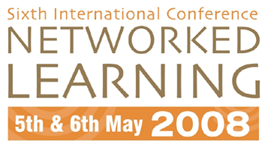

"Before You Know Where You Are, You Have a Sequence" - Designing for Inquiry-based Learning with the Learning Activity Management System (LAMS)
Philippa Levy1, Sabine Little3
Centre for Inquiry-based Learning in the Arts and Social Sciences, University
of Sheffield, p.levy@sheffield.ac.uk, s.little@sheffield.ac.uk
Oloaojo Aiyegbayo2
Beyond Distance Research Alliance, University of Leicester, olaojo.aiyegbayo@le.ac.uk
Abstract
This paper reports some of the findings of an evaluation project funded by the Joint Information Systems Committee of the Higher Education Funding Council for England as part of its Design for Learning programme (2006-7). The project was entitled DeSILA: Designing and Sharing Inquiry-based Learning Activities. Using a qualitative research/evaluation methodology, it explored the use of an activity-focused, open source tool (LAMS: Learning Activity Management System) for creating, orchestrating and sharing designs for inquiry-based learning (IBL) in the arts and social sciences; some forms of IBL being close, philosophically and pedagogically, to 'networked learning' as a specific approach to e-learning. One strand of the project focused on exploring the fit between practitioners'pedagogical purposes, values and practices in designing for IBL, and the features and functionality of LAMS as a tool for creating learning designs. Project findings relating to this strand are discussed in this paper. The focus of this paper is on experiences of creating designs for learning using LAMS, rather than on the orchestration of designs with students.
The research identified variation in conceptions of IBL pedagogy, which participants described as a flexible practice dependent on contextual factors. While principles associated with learner autonomy, responsibility, reflexivity and ownership were shared across all conceptions, the 'student-led' nature of IBL was subject to different emphases and interpretations. The research identified four broad approaches to designing for learning and among these, variation in the ways in which practitioners approached designing for IBL. This variation was seen firstly in terms of differential emphasis on 'process'or 'content' considerations, and secondly in terms of the differential influence of generic conceptual frameworks. Designing for learning was characterised in some cases as a holistic practice. Process considerations (relating to the design of students' learning experiences and activities) as opposed to content considerations (relating to the selection and creation of subject matter) tended to play a key role as the point of departure for IBL design.
LAMS offered a close fit with the process-oriented nature of designing for IBL in terms of the foregrounding of 'activity' and was perceived as a promising tool for more strongly teacher-led approaches to, IBL. However, in illuminating strong pedagogical and design affordances associated with linearity, tight activity structure and teacher-control, the research indicated a weaker fit with more open-ended and student-led approaches. In this sense, LAMS was not experienced as a pedagogically neutral tool. The paper concludes by drawing some implications for the further development and use of design for learning tools. The authors highlight the value of opportunities for practitioners to 'step back' during the design process to explore underpinning pedagogical purposes and values, and suggest that, in addition to tools created specifically for teachers, there may be a role for student-facing tools that enable networked learners to design, represent, manage, share and reflect on their own inquiry activities.
| About NLC |
2008 Conference Papers
| Conference Committee| Keynote
Speakers
| Papers from previous NL conferences |Research Seminars| Current Conference
| Sponsors | Contact
|
